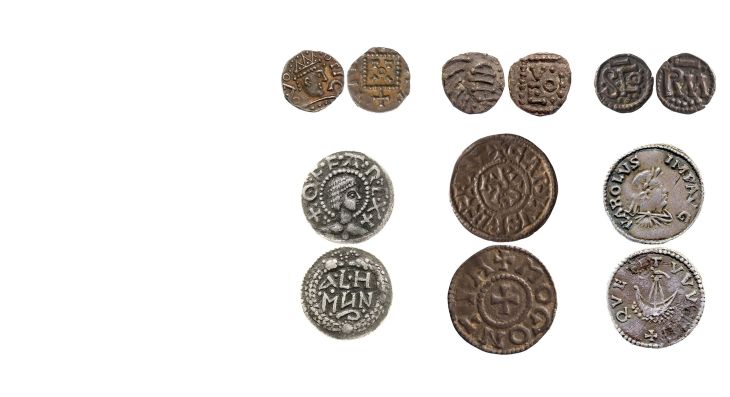Between 660 and 750 AD, Anglo-Saxon England witnessed a profound revival in trade involving a dramatic surge in the use of silver coins, breaking from a reliance on gold.
Around 7,000 of these silver ‘pennies’ have been recorded, a huge number, about as many as we have for the rest of the entire Anglo-Saxon period (5th century – 1066).
For decades, experts have agonised over where the silver in these coins came from.
Now a team of researchers from the Universities of Cambridge, Oxford and Vrije Universiteit Amsterdam have solved that mystery by analysing the make-up of coins held by the Fitzwilliam Museum in Cambridge.
The journal Antiquity published their study on 9th April 2024. Co-author, Professor Rory Naismith (Dept. of Anglo-Saxon, Norse & Celtic; Corpus Christi College), says:
“There has been speculation that the silver came from Melle in France, or from an unknown mine, or that it could have been melted down church silver. But there wasn't any hard evidence to tell us one way or the other, so we set out to find it.”
Previous research has tested coins and artefacts from the silver mine at Melle but Naismith and his colleagues turned their attention to less-studied coins which were minted in England, the Netherlands, Belgium and northern France.
Helpfully, Naismith had “a powerhouse of early mediaeval numismatic research” on his doorstep: The Fitzwilliam Museum.
To begin, 49 of the Fitzwilliam’s coins (dating from 660 to 820 AD) were taken to the laboratory of Dr Jason Day in Cambridge’s Dept. of Earth Sciences for trace element analysis.
Next, the coins were analysed by ‘portable laser ablation’ in which microscopic samples were collected onto Teflon filters for lead isotope analysis.
This is a new technique, pioneered by the Vrije Universiteit Amsterdam, which combines the minimally invasive sampling of laser with the high precision results of more traditional methods in which physical samples of silver are taken.
While the coins mostly contained silver, the proportion of gold, bismuth and other elements in them guided the researchers to the silver’s previously unknown origins. Different ratios of lead isotopes in the silver coins provided further clues.
The analysis revealed two major findings...
















